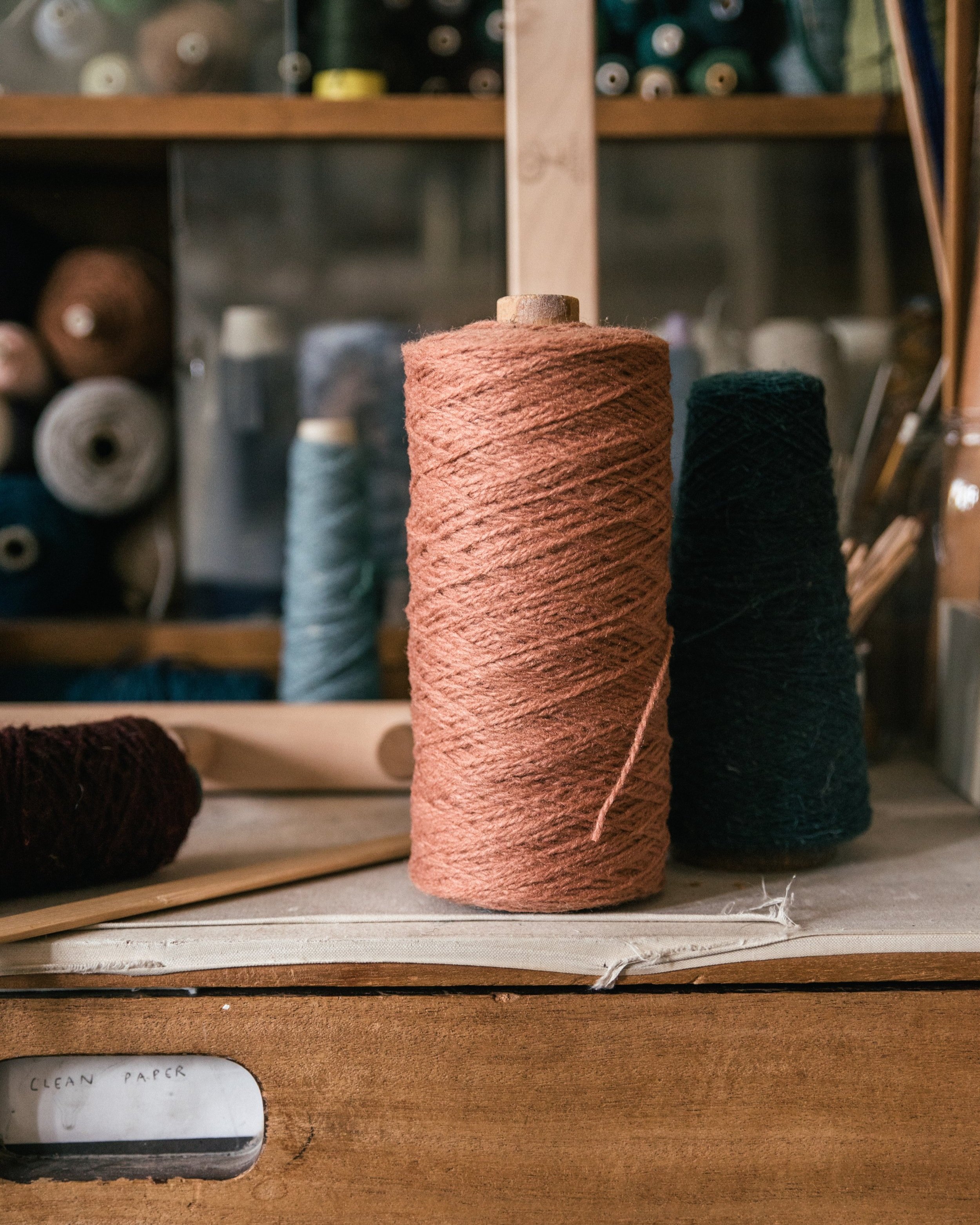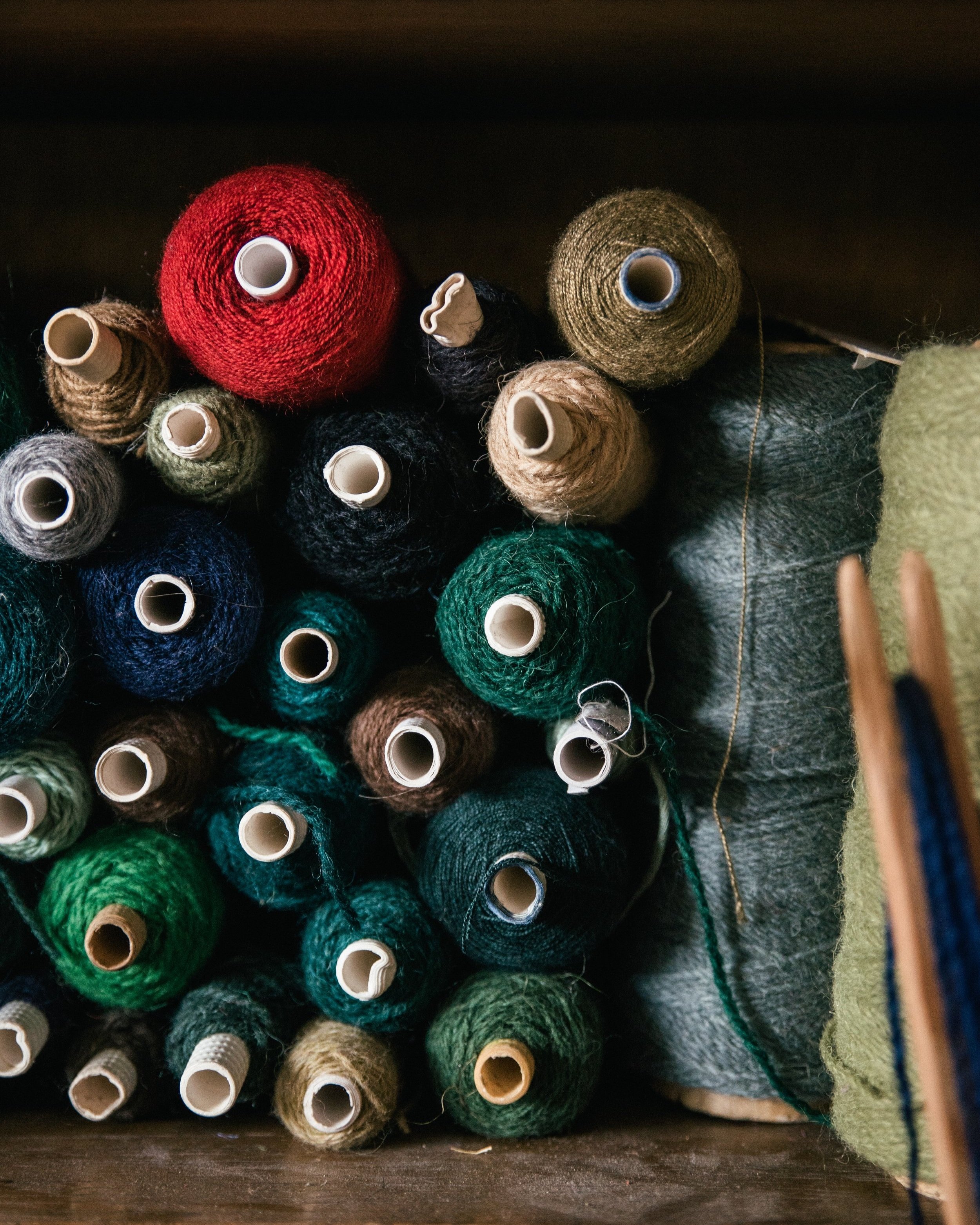A Weaver’s Guide to Thrifting Yarn
Over the course of my seven years as a full time weaver, there’s been one question that comes up again and again
“Where do you get your yarn from?”
It’s a question that ultimately led me to set up Balfour & Co and start selling my own brand of rug yarn, so I could always refer my students and followers to a yarn that I trusted & believed in 100%.
Of course, there’s also a whole host of stores around the world who sell wonderful yarns and I’ve listed these extensively on my stockists & suppliers pages for my Geometric Weaving and Rug Weaving online courses.
But in today’s post I want to talk about another way to build up your yarn stash - buying second hand yarn.
When I set up my weaving studio all the way back in 2015, I had a few trusted suppliers that I sourced my yarn from. But I also sought out yarn from charity shops, online sales, other weavers and obscure listings that I found on page 15 of Google search. In this post I’m sharing my methods and tips for sourcing second hand yarn.
Before you read on, please note: I’m a UK-based weaver so all the links in this post will be specific to the UK. But I think the advice here can be applied to almost any country and I encourage you to do your research to find sources local to you!
Vintage rug yarns and cotton cords
Charity Shops
Also known as thrift stores or op shops in other parts of the world, charity shops have been my go-to source for yarn for a long time now. Even though I have yarn literally stacked to the ceiling in my studio, I still can’t resist checking any charity shop I visit to see if they have a few balls or cones of yarn in stock- and they usually do.
Pro Tip: If they have yarn on display, they’ll usually have more in the back!
In the past I’ve asked if they have any yarn that hasn’t been sorted through yet, and sometimes I’ve been lucky! One time they hauled out several massive bin-bags of unsorted yarn that I got to sort through and take my pick! It never hurts to ask.
Vintage rug yarn
Vintage Markets
Vintage shops or markets will be more pricey than charity shops, but if they do have yarn it will usually be better quality. You may get lucky and find old yarn spools or mill ends (i.e. yarn left over from the industrial weaving process)
In my experience, older wool is often tougher and coarser than modern wool (which is trying to compete with super soft acrylic yarns) and is perfect for rug weaving or tapestry weaving. I’ve also found some great weaving tools from vintage markets over the years, and saved them from a lifetime as a hipster ornament by actually putting them to use.
Second-hand yarns, originally from The Handweaver’s Studio
Online Listings
The internet can be an overwhelming place to try and find what you’re looking for, but it helps to narrow it down. Here in the UK there are websites like The Loom Exchange where weavers will sell looms, weaving tools and yarn.
I’ve also made a habit of having an alert set on Gumtree or eBay for when something I’m looking for comes in stock, e.g rug yarn, vintage yarn, looms, weaving tools, you name it. That way when something does come up, I’m ready to snap it up.
Vintage yarns
Local Guilds
One of the wonderful things about a historic craft like weaving is the number of local guilds and small communities that have sprung up around it over the years. These groups are full of old and new weavers alike. And often, when an experienced weaver is looking to downsize or shift some yarn that they know they’ll never use, they advertise it to their local guild first.
Plus, joining your local guild is a great way to share knowledge, build community and learn more about your craft. If you’re a UK based weaver, you can find a list of all your local guilds here.
Hopefully this blog post has given you some ideas of how you can start sourcing vintage yarn for yourself. And if you’re wondering what type of yarn to look for, you can read my previous posts on the best yarn for rug weaving, or on the materials you should use for tapestries and rugs.
Happy Yarn Hunting!






